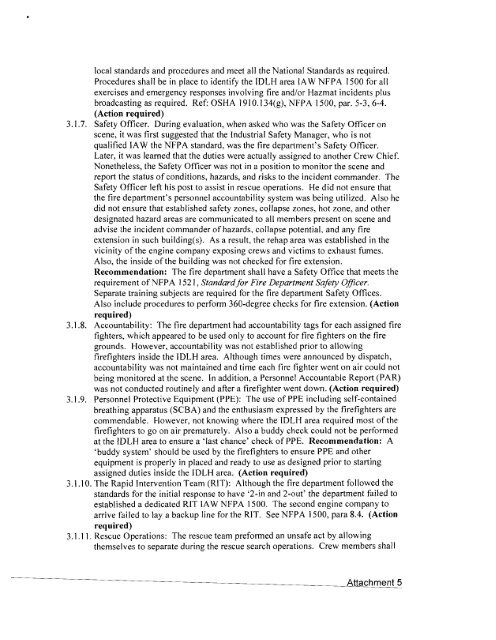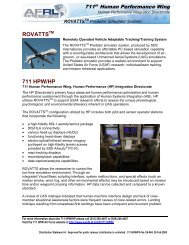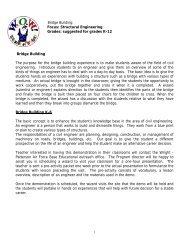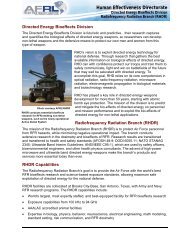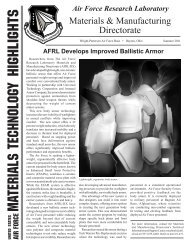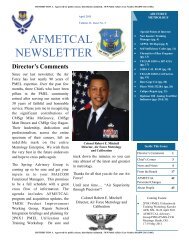Plant 44 Audit Reports - Wright-Patterson Air Force Base
Plant 44 Audit Reports - Wright-Patterson Air Force Base
Plant 44 Audit Reports - Wright-Patterson Air Force Base
- No tags were found...
Create successful ePaper yourself
Turn your PDF publications into a flip-book with our unique Google optimized e-Paper software.
local standards and procedures and meet all the National Standards as required.Procedures shall be in place to identify the IDLH area IA W NFPA 1500 for allexercises and emergency responses involving fire and/or Hazmat incidents plusbroadcasting as required. Ref: OSHA 191O.134(g), NFPA 1500, par. 5-3,6-4.(Action required)3.1.7. Safety Officer. During evaluation, when asked who was the Safety Officer onscene, it was first suggested that the Industrial Safety Manager, who is notqualified lAW the NFPA standard, was the fire department's Safety Officer.Later, it was learned that the duties were actually assigned to another Crew Chief.Nonetheless, the Safety Officer was not in a position to monitor the scene andreport the status of conditions, hazards, and risks to the incident commander. TheSafety Officer left his post to assist in rescue operations. He did not ensure thatthe fire department's personnel accountability system was being utilized. Also hedid not ensure that established safety zones, collapse zones, hot zone, and otherdesignated hazard areas are communicated to all members present on scene andadvise the incident commander of hazards, collapse potential, and any fireextension in such building(s). As a result, the rehap area was established in thevicinity of the engine company exposing crews and victims to exhaust fumes.Also, the inside ofthe building was not checked for fire extension.Recommendation: The fire department shall have a Safety Office that meets therequirement of NFPA 1521, Standardfor Fire Department Safety Officer.Separate training subjects are required for the fire department Safety Offices.Also include procedures to perform 360-degree checks for fire extension. (Actionrequired)3.1.8. Accountability: The fire department had accountability tags for each assigned firefighters, which appeared to be used only to account for fire fighters on the firegrounds. However, accountability was not established prior to allowingfirefighters inside the IDLH area. Although times were announced by dispatch,accountability was not maintained and time each fire fighter went on air could notbeing monitored at the scene. In addition, a Personnel Accountable Report (PAR)was not conducted routinely and after a firefighter went down. (Action required)3.1.9. Personnel Protective Equipment (PPE): The use of PPE including self-containedbreathing apparatus (SCBA) and the enthusiasm expressed by the firefighters arecommendable. However, not knowing where the lDLH area required most of thefirefighters to go on air prematurely. Also a buddy check could not be performedat the IDLH area to ensure a 'last chance' check of PPE. Recommendation: A'buddy system' should be used by the firefighters to ensure PPE and otherequipment is properly in placed and ready to use as designed prior to startingassigned duties inside the lDLH area. (Action required)3.1.1 0. The Rapid Intervention Team (RIT): Although the fire department followed thestandards for the initial response to have '2-in and 2-out' the department failed toestablished a dedicated RIT IA W NFPA 1500. The second engine company toarrive failed to lay a backup line for the RIT. See NFPA 1500, para 8.4. (Actionrequired)3.1.11. Rescue Operations: The rescue team preformed an unsafe act by allowingthemselves to separate during the rescue search operations. Crew members shallAttachment 5


